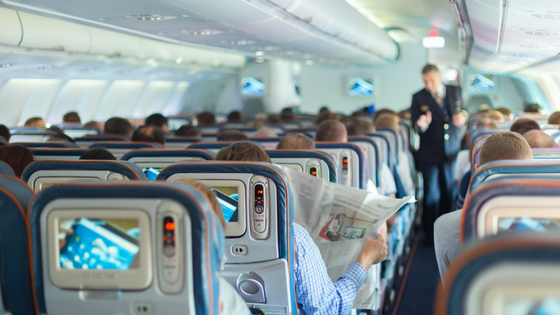Raise your hand if you tend to tune out the flight attendants as they go over safety procedures prior to takeoff.
If your hand is in the air, rest assured you’re not alone. After all, the safety speech includes the fact that all safety information can be found on a card in the back pocket of each seat. It’s all there for you to read at your leisure, so why bother listening to an attendant rehash it?
Not to mention, it’s always the same safety story. The instructions rarely change. Look for the exit signs and you’ll find a way out. You know to keep your seatbelt fastened with the light is on. The oxygen mask looks self-explanatory to most folks.
And, if something dire were to happen mid-air, how much control could you have over the situation concerning your own safety?
The recent Southwest Airlines debacle has once again raised the safety issues regarding air travel.
The good news is that in-flight safety instruction remains highly relevant, and if you tend to block out the verbal instructions, you’ll want to tune into this:
Airlines Are Safer Than Most People Realize
Southwest Airlines’ unfortunate engine failure resulted in one death, but that has been the only fatality in the airline’s 47-year history. In fact, studies show that all American air carriers are so safe that it’s hard to rank them by safety.
The last death on a US-registered airline was nine years prior.
To put this in perspective, compare two deaths in nine years to the number of automobile accidents during the same span. Air travel remains the safest method of transportation, statistically.
So, can’t we just ease up on the safety talks?
The answer to this will always be a resounding No.
Why In-Flight Safety Training Is Still Effective, Even When Fliers Tune Them Out
Despite the passive behavior during safety demonstrations, in-flight safety training remains a top priority in keeping passengers safe. In-flight safety is just as important to the attendants as it is the passengers (despite the fact that safety announcements are mandatory by law).
The danger comes when airlines become complacent like their fellow passengers and start to drift away from their safety focus.
One of the biggest threats to air safety as it currently stands is when airlines continue to consolidate and globalize. Historically, many airlines go above and beyond the minimum maintenance and training requirements to promote a safety culture. But as costs with consolidation increase, many may revert closer to the minimum as a cost-saving initiative and shift away from their previously high standards.
It’s a desire to do what’s faster and cheaper, not what’s best.
What Airline Companies Can Do to Continue Their Safety Tradition
Airline safety isn’t just the absence of accidents, especially considering that air travel is the safest form of transportation.
Safety may one day become an assumed practice, but that should never be the case. Airlines are safe because of the ongoing efforts to make them so. A shift toward complacency would inevitably see an increase in disasters, accidents, and fatalities.
To combat this, it’s increasingly important to focus attention and resources on safety training. The fact that no one seems to be listening shouldn’t be an invitation to cut corners. Given the statistics, something is obviously working in airline safety procedures to keep accidents and fatalities off the board and out of the headlines.
Using safety software as part of your safety program’s core can help employees and leaders monitor and track program requirements, training fulfillment, incident reporting, and other factors to gauge the airline’s continued success as a safety leader.
It shouldn’t take a catastrophe to get people to start paying attention to in-flight safety. Flight attendants didn’t attend six weeks of onboarding to learn how to pour soda. They’re there to help keep passengers safe, and can only do so through continuous training and support – even when their passengers aren’t listening.
To find out more about how you can integrate safety software into your company’s safety program, contact us today.
